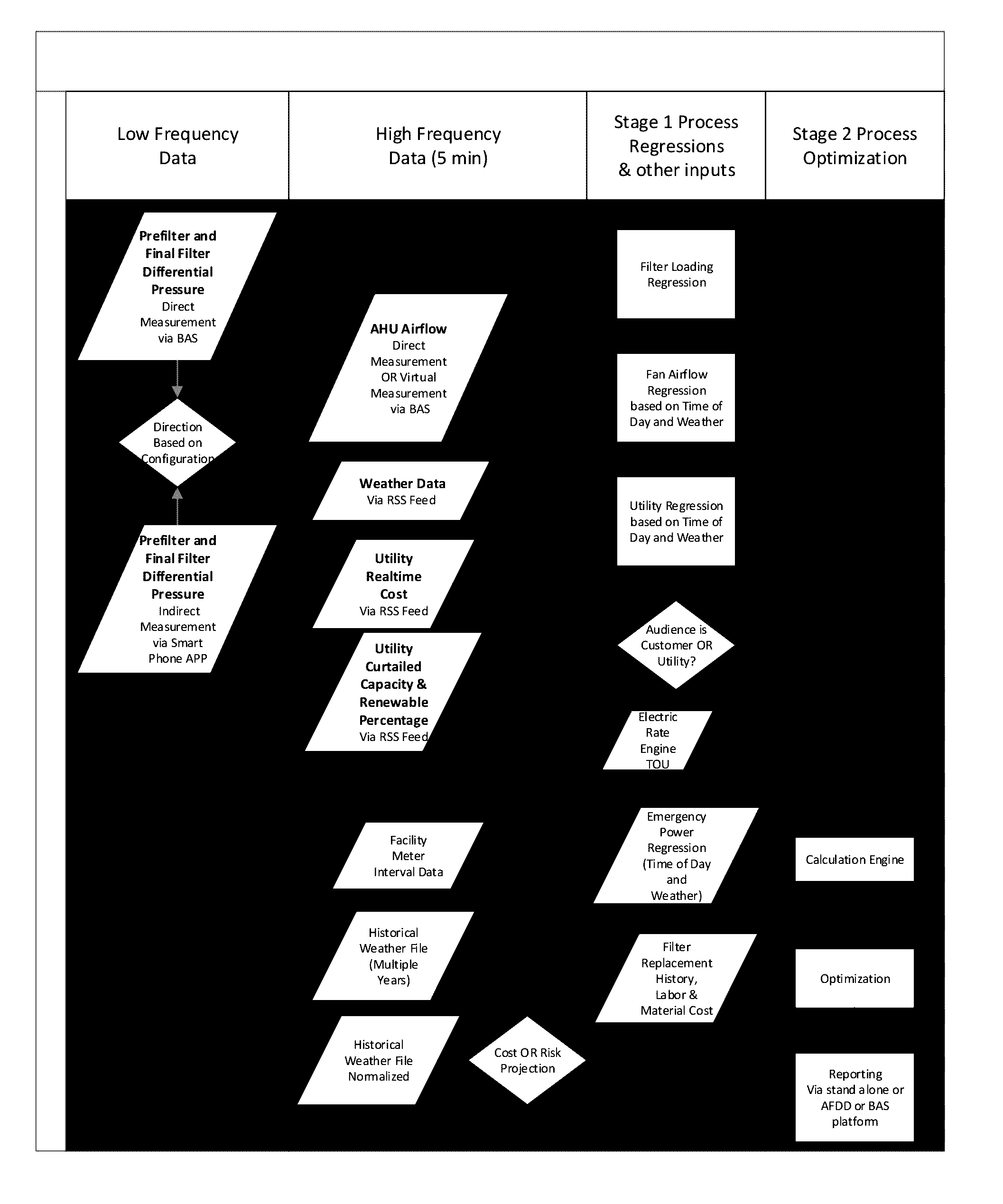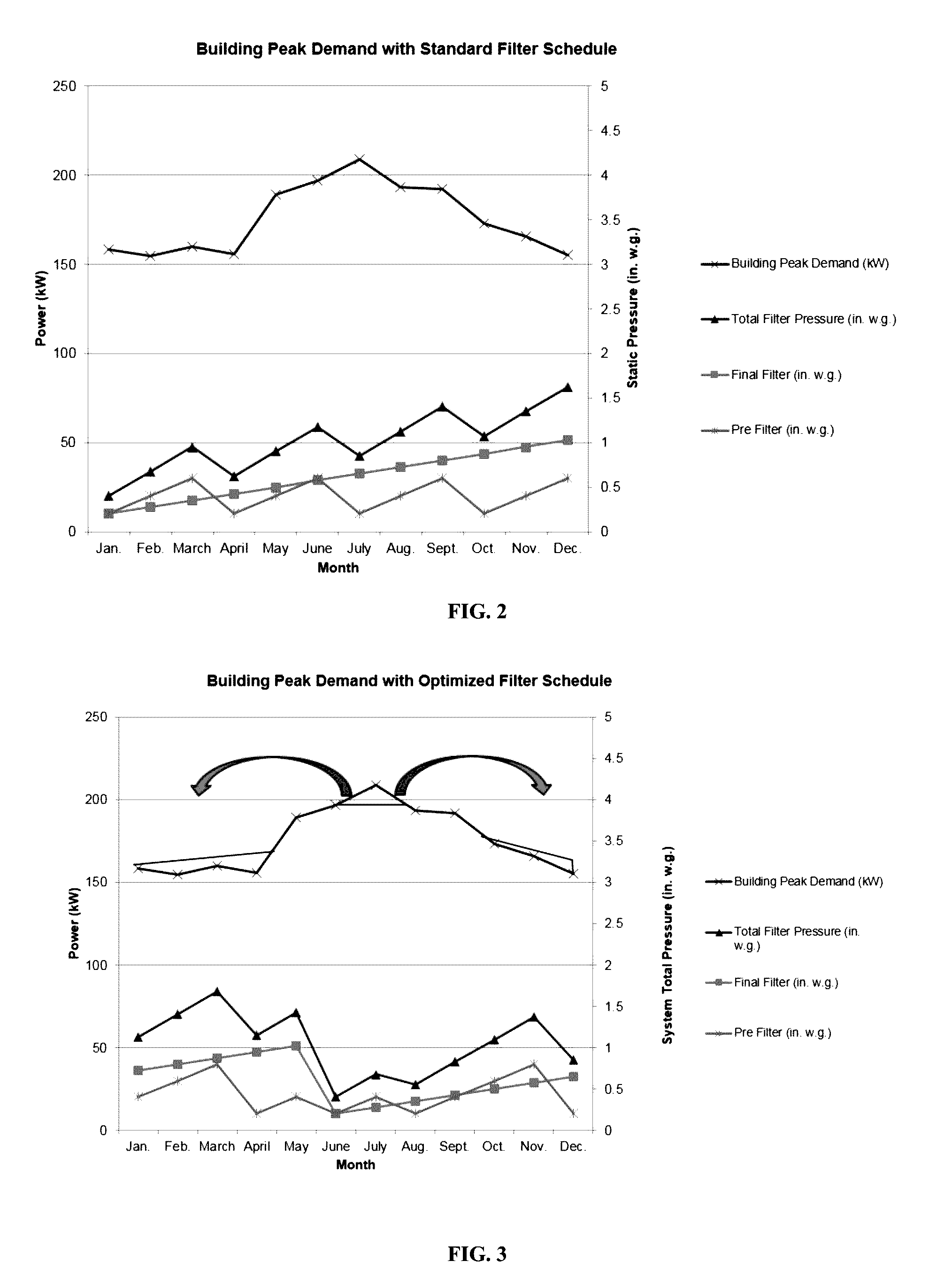Air handling unit filter replacement system and method
- Summary
- Abstract
- Description
- Claims
- Application Information
AI Technical Summary
Benefits of technology
Problems solved by technology
Method used
Image
Examples
Embodiment Construction
[0025]The improved optimization configuration of the present invention is best shown in FIG. 1 as including a building automation system and alternate data gathering techniques, energy calculation engine and optimization engine working in concert with one another.
[0026]The results of implementing the improved optimization configuration of the present invention is best shown in FIGS. 2 and 3. FIG. 2 is the baseline electric demand curve. FIG. 3
Is the optimized electric demand curve.[0027]1) Building Automation System (BAS) and / or data gathering platform associated with Automated Fault Detection and Diagnostics (AFDD) Platform.[0028]A) In general, a BAS is a Direct Digital Control (DDC) system utilizing sensors / actuators / controllers / operator workstation and network to tie all the elements together as is the industry's standard of care. This network will either incorporate a computer on site to perform the optimization calculations or include a gateway to the internet for access to an ...
PUM
 Login to View More
Login to View More Abstract
Description
Claims
Application Information
 Login to View More
Login to View More - R&D
- Intellectual Property
- Life Sciences
- Materials
- Tech Scout
- Unparalleled Data Quality
- Higher Quality Content
- 60% Fewer Hallucinations
Browse by: Latest US Patents, China's latest patents, Technical Efficacy Thesaurus, Application Domain, Technology Topic, Popular Technical Reports.
© 2025 PatSnap. All rights reserved.Legal|Privacy policy|Modern Slavery Act Transparency Statement|Sitemap|About US| Contact US: help@patsnap.com



